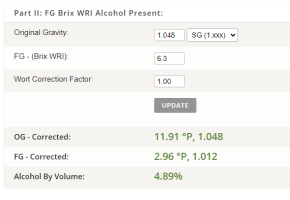gwind
Member
I went to my local homebrew store and bought ingredients for a 5 gallon home brew Kolsch. The store was out of the Brewers Best Boxes, which is what I am used to, so the owner picked out ingredients for me and told me to look up a Kolsch recipe. I've done some research and believe I have a good recipe, but would like some more experience homebrewers to double check me. I'm open to corrections and any advice! Thank you in advance!
Ingredients:
1 lb Belgian Pils Malt
2x 3.3 LB Pilsen Light LME (6.6 lb total)
1 oz Sazz hops
1 oz Hallertauer hopz
Kveik dry ale yeast (11 g)
Here is my recipie:
1) Wort - add 1 lb belgian pils malt into 2.5 of water at 150 F - 160 F. Steep for 20 min. Remove malt bag.
2) Boil - bring wort to boil. Add 3.3 LB Pilsen Light LME. Stir and bring back to a boil. Boil for 60 min total.
30 min in add 1 oz Saaz hops
45 min in add 3.3 LB Pilsen LME
50 min in add 1 oz Hallertauer hops
end boil at 60 min
3) Cool wort to 70 F. Take OG. OG: 1.045 - 1.049
4) Add water to wort until it reaches 5 gallons.
5) Re-hydrate yeast per package instructions. Pitch yeast into wort.
6) Ferment for 4-6 days. FG: 1.010 - 1.013
In general, I like less-hoppy beers which I know means adding hops later in the boil. My biggest two questions are:
1) When, if at all, should I add the second 3.3 LB Pilsen Light LME?
2) When should the 1 oz Saaz and 1 oz Hallertauer hops be added during the boil? Should I split the 1 oz of Sazz hops into 2x .5 oz portions?
Ingredients:
1 lb Belgian Pils Malt
2x 3.3 LB Pilsen Light LME (6.6 lb total)
1 oz Sazz hops
1 oz Hallertauer hopz
Kveik dry ale yeast (11 g)
Here is my recipie:
1) Wort - add 1 lb belgian pils malt into 2.5 of water at 150 F - 160 F. Steep for 20 min. Remove malt bag.
2) Boil - bring wort to boil. Add 3.3 LB Pilsen Light LME. Stir and bring back to a boil. Boil for 60 min total.
30 min in add 1 oz Saaz hops
45 min in add 3.3 LB Pilsen LME
50 min in add 1 oz Hallertauer hops
end boil at 60 min
3) Cool wort to 70 F. Take OG. OG: 1.045 - 1.049
4) Add water to wort until it reaches 5 gallons.
5) Re-hydrate yeast per package instructions. Pitch yeast into wort.
6) Ferment for 4-6 days. FG: 1.010 - 1.013
In general, I like less-hoppy beers which I know means adding hops later in the boil. My biggest two questions are:
1) When, if at all, should I add the second 3.3 LB Pilsen Light LME?
2) When should the 1 oz Saaz and 1 oz Hallertauer hops be added during the boil? Should I split the 1 oz of Sazz hops into 2x .5 oz portions?




